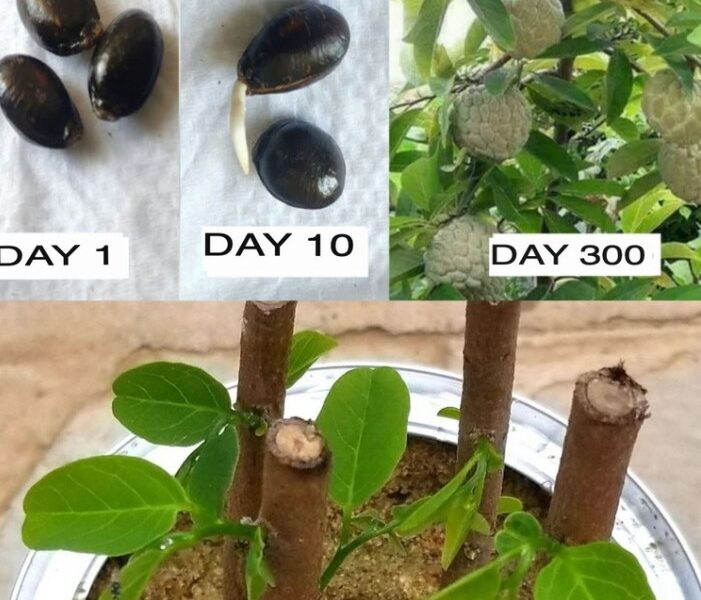Mastering the Art of Growing Sugar Apple Trees from Seeds at Home
Growing a sugar apple tree, also known as sweetsop, from seed at home is a rewarding experience that requires patience and care. Here is a detailed guide to help you through the process:
Prepare the seeds
Sowing Requirements: You need fresh seeds, as they have a higher germination rate. Dry or older seeds may not germinate well.
Sweetsop Seeds
Germination process
Sow seeds horizontally: Plant seeds horizontally, about 2-3 cm deep, in high-quality seedling soil. Germination usually occurs within 30 days, but can be slow due to the tough seed coat.
Weaken the seeds: To speed up germination, you can weaken the seeds with sandpaper. This process involves lightly scraping the seed coat to allow moisture and air to penetrate more easily.
Use a soilless seed starting mix: This mix, available at most garden centers, protects seeds from disease and ensures good growth.
Care after germination
Fertilization: Young trees should be fertilized every six to eight weeks during the growing period with a complete fertilizer (e.g. 6-6-6 or 8-3-9). Organic fertilizers, such as chicken or cow manure, are also beneficial.
Watering: Water plants two to three times per week during the active growing period. Be careful not to overwater, however, as this can lead to root rot.
Pollination
Sugar apple trees can flower as early as six months from seed. Hand pollination is often necessary to produce fruit.
Collect the male pollen in the morning and use it to pollinate the female flowers during their receptive phase.
Pruning and maintenance
Pruning should be done in winter or after fruiting. When pruning, outer branches are cut back to encourage dense growth and possibly increase fruit production.
Beware of pests such as aphids, mealybugs and mealybugs, which can affect the health of your tree.
Growing in Containers
Sugar apple trees can be grown in containers but should be kept small, either as a shrub or as a bonsai. The container should be 20% larger than the rootball and the soil should be changed every few years.
Harvest
Harvest Time: Sugar apples are usually ready for harvest in summer or fall.
Ripening: It is best to harvest the fruits slightly before they are fully ripe to prevent them from over-ripening on the tree.
Challenges and solutions
Avoid heavy fertilization near the tree, as this can reduce fruit production and quality.
Sugar apple trees are somewhat drought tolerant but require consistent moisture, especially in the early stages of growth.
By following these steps and providing the necessary care, you can successfully grow a sugar apple tree from seeds at home. Remember that patience is the key, as the tree may take several years to bear fruit
